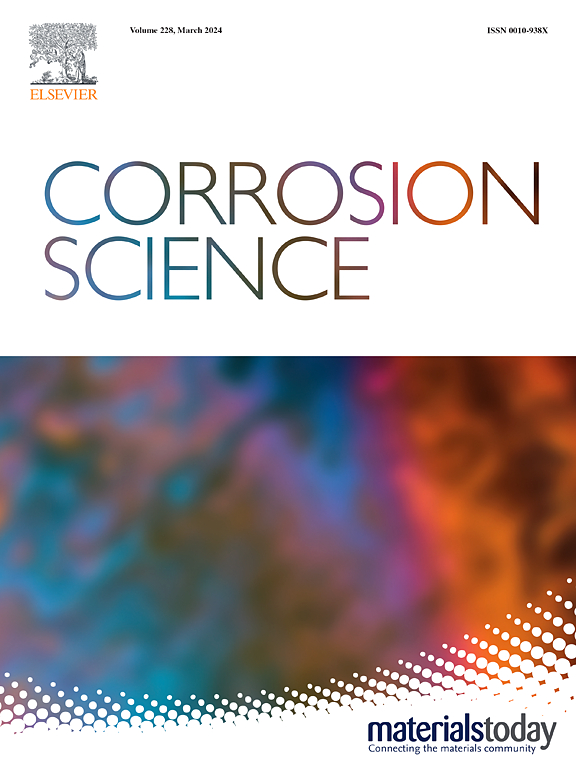无氧和含氧条件下青铜合金腐蚀差异的比较与研究
IF 7.4
1区 材料科学
Q1 MATERIALS SCIENCE, MULTIDISCIPLINARY
引用次数: 0
摘要
对含 Cl 环境中溶解氧对双相青铜合金的初始腐蚀研究表明,青铜合金在有氧环境中优先钝化,然后选择性地溶解 Cu。腐蚀速度先是减慢,然后逐渐加快。相反,无氧环境加速了 Cu-Cl 和 Sn-Cl 的反应,在金属表面形成富含 Cl- 的层。该层促进了氯化锡的形成,从而诱发了 Cu-Sn 产物的分层。在此过程中,溶液的酸化会使金属进入自循环腐蚀机制,但腐蚀速率仍然很低。本文章由计算机程序翻译,如有差异,请以英文原文为准。
Comparison and study of the corrosion differences of bronze alloys in oxygen-free and oxygen-containing conditions
The study on the initial corrosion of duplex bronze alloy by dissolved oxygen in Cl-containing environment showed that bronze alloy was preferentially passivated in aerobic environment, and then Cu selectively dissolved. The corrosion rate first slowed down and then gradually accelerated. In contrast, the oxygen-free environment accelerates the reaction of Cu-Cl and Sn-Cl, forms a Cl- rich layer on the metal surface. This layer promotes the formation of Sn chloride, thereby inducing the stratification of Cu-Sn products. In this process, the acidification of the solution causes the metal to enter a self-circulating corrosion mechanism, but the corrosion rate remains low.
求助全文
通过发布文献求助,成功后即可免费获取论文全文。
去求助
来源期刊

Corrosion Science
工程技术-材料科学:综合
CiteScore
13.60
自引率
18.10%
发文量
763
审稿时长
46 days
期刊介绍:
Corrosion occurrence and its practical control encompass a vast array of scientific knowledge. Corrosion Science endeavors to serve as the conduit for the exchange of ideas, developments, and research across all facets of this field, encompassing both metallic and non-metallic corrosion. The scope of this international journal is broad and inclusive. Published papers span from highly theoretical inquiries to essentially practical applications, covering diverse areas such as high-temperature oxidation, passivity, anodic oxidation, biochemical corrosion, stress corrosion cracking, and corrosion control mechanisms and methodologies.
This journal publishes original papers and critical reviews across the spectrum of pure and applied corrosion, material degradation, and surface science and engineering. It serves as a crucial link connecting metallurgists, materials scientists, and researchers investigating corrosion and degradation phenomena. Join us in advancing knowledge and understanding in the vital field of corrosion science.
 求助内容:
求助内容: 应助结果提醒方式:
应助结果提醒方式:


